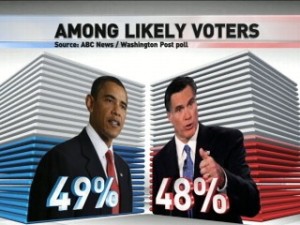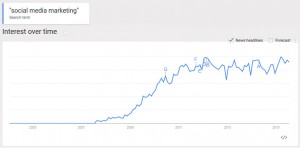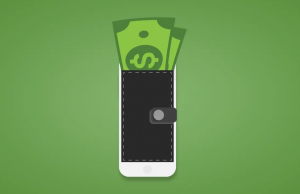Why are the 2016 political candidates basically ignoring social media as they craft their advertising campaigns?
Are candidates entrusting their political careers to a bunch of old fuddy duddies who aren’t with the times?
Did everyone forget how Obama came from a lowly freshman senator to President of the United States using the power of social media to spur voters?
Do candidates and their campaign managers fail to understand the importance of social media in today’s political climate?
Are Facebook, Twitter, Snapchat, and other social platforms just too much of the wild west for politicians?
For, that’s the reality.
According to Stephen Shepard of Politico:
Campaign advertising in 2016 is estimated to top about $ 4.4 billion. That combines the advertising run by the campaigns and the candidates themselves, and also the growth of super PACs in the post-Citizens United era. It is $ 500 million more than was spent in 2012, in the last presidential election.
And, the lion’s share of that advertising belongs to…
You guessed it, television.
In an interview airing this week on NPR’s Marketplace, Stephen told Kai Ryssdal:
The future might be digital, but the problem is that the advertising hasn’t really caught up with that. The ways in which you can reach people, target them, television …live television is still the best way to do that.
Duh?
Who does live television target? And, how do they target?
Especially the news programs where much of this political advertising gets placed. According to Kai, local networks are adding news programming simply to have enough advertising inventory to meet the demand from candidates and PACs.
Why social media stands in the soup line while TV rakes in the big bucks
Kai and Stephen suggest part of the problem is PACs — those political action committees validated in a Supreme Court ruling on Citizens United — are so darn successful at raising money. In 2012, they raised over $ 600 million to influence the presidential election in their first opportunity to raise unlimited funds from anyone without disclosing contributor names. This opened the flood gates and 2016 promises up to $ 1 billion in so-called, “Dark Money”.
Their conclusion:
- Social media just isn’t expensive enough to consume a $ 1 billion
- It doesn’t reach all demographic groups
- It’s too unpredictable
- The guys running the show (and, it’s overwhelmingly old, white guys) just do what they’ve always done
Social media isn’t expensive enough?
Is that the way we judge advertising?
I dare you to go into your boss tomorrow and argue for a product with a $ 1 billion advertising budget, then say you’re gonna spend the lion’s share on TV advertising, not because it will get you the customers you need to justify the expenditure, but because it’s the only way to spend the entire budget in a few months.
You’ll be packing your things in a box within 5 minutes. Or, find yourself on the way for a psych evaluation.
That’s just crazy talk.
You don’t spend money (on advertising or anything else for that matter) without some clear notion that the expense is the BEST way to generate a high ROI (return on investment).
So, if it’s so crazy for a company to operate without some clear ROI objectives, why do political campaigns run that way?
Social media doesn’t reach all demographic groups
Maybe that was true a few years ago, but it’s certainly not true today.
According to Pew, 71% of adult internet users are on Facebook — 56% of all adults in the US are on Facebook.
And, when I say all, I mean ALL. Facebook is no longer a little platform for college students. A full 56% of internet users 65 and older are on Facebook, according to Pew.
Facebook tends to be a little skewed toward women and slightly underrepresents African Americans (67%), but it still covers a boatload of folks — voting folks.
Twitter doesn’t fare so well — with only 19% of adults being into Tweeting. Twitter does offer higher percentages of minority adults — Blacks and Hispanics. So, it’s a great choice for reaching minority voters.
Twitter is also skewed towards adults with higher education and higher incomes.
Instagram is an even better choice for reaching minority Americans, with higher usage among both Blacks (38% of online adults) and Hispanics (34% of online adults) versus white, non-Hispanics (21%). And Pinterest is a great way to reach women, with 42% of online adult women using it compared to only 18% men. Pinterest skews toward white and Hispanic women with higher education levels and incomes.
LinkedIn is particularly useful in reaching more affluent adults with higher education levels.
Facebook, Twitter, and Instagram users access their accounts at least once a week, while the other social networks demonstrate lower frequency levels.
To recap, social media DOES reach all demographic groups. More importantly, social media allows you to select a customized reach based on demographic criteria, lifestyle, job title, company, geographic location, and even some behavioral characteristics. You can customize your message for individual target groups, just be careful that you’re not contradicting yourself because your targeted posts will inevitably get shared with folks not in that particular group.
Social media is too unpredictable
That’s true — if you don’t have a skilled team running your social media campaigns. Used skillfully, social media is the best at humanizing candidates — making them feel like your neighbor who knows your pain and will fight for you.
Social media also harnesses the power of individual users engaging in collective action to influence potential voters. During the 2012 Presidential campaign, I “watched” the second debate via Twitter and RT Tweets I found particularly insightful. It was a great way to take the pulse of the nations people as they watched the debate unfold and help spread my views on the candidates.
Not only is social media important for spreading and validating candidate messages, it’s the perfect place to understand the nation’s voters and take the pulse of potential voters. That’s why it’s important to not just post on social media, but use advanced analytics to understand what resonates with them and what doesn’t.
Campaigns just doing things the way they’ve always been done
This is probably the underlying reason why campaigns spend so heavily on TV advertising.
Understanding how social media works, optimizing your efforts using social media (real-time) analytics, and managing the flow of conversations of social media are entirely different and require an entirely different skill set from traditional media.
It’s simply easier to use traditional media than take the time to learn social media.
And, that strategy works until someone (like Obama) comes along and disrupts your traditional thinking by breaking loose with social media. Then, your game can backfire — leaving you to pick up the pieces and wonder where things went wrong.
(190)






